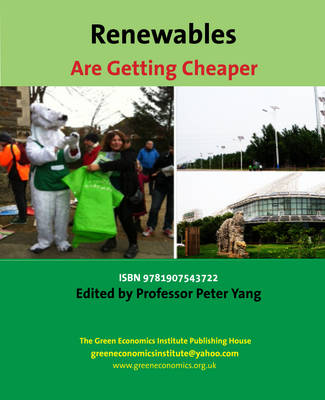A. Renewable Energy Intensity of Major EconomiesPeter YangIntroductionRenewable energy has become an important component in the world energy supply. In 2014, renewables represented around 59 percent of net additions to global power capacity, more than coal and gas combined. The cost of electricity from wind and solar has fallen dramatically in recent years as a result of technological advancement and market diffusion.Wind power, for example, has turned into a mainstream technology. It is already cheaper in Australia and Brazil than fossil fuels and directly competes with them in an increasing number of markets including Mexico, New Zealand, South Africa and parts of China and the United States. Wind power has become the power technology of choice as governments, utilities, and energy planners aim to reduce CO2 emissions and air pollution, diversify their energy mix, protect their economies from volatile fossil fuel prices, and benefit from increased investment and job creation. With the right policy support, the global wind sector could reach 1,000 GW by 2020 avoiding over 9 billion tons of CO2 emissions per year.While solar expansion faced some slowdown in Europe, it experienced exponential surge in China and Japan.
Despite the slowdown, solar PV technology has already exceeded its deployment goals under the European Commission's renewable energy targets. With renewables accounting for a projected 15.3 percent of total European energy consumption in 2014, the EU is on track to meet its 2020 targets. While solar costs have dropped drastically and are still falling, grid-based power prices are rising. In addition, solar module prices will fall another 40 percent over the next four to five years. As a result, solar is expected to be at grid parity in most countries by the end of 2017. Even if electricity prices remain stable, solar is going to be cheaper in two thirds of the world than their current fossil fuel power supply.Many studies argued that the green economic transformation has become necessary; it could not only help reduce the carbon emissions of the economic activities and the related impact on global warming and climate change but also contribute to increasing the technological innovation for energy efficiency and renewable energy generation and consumption, and to sustaining the real economic growth and reduce its ecological impact on the planet (WBCSD 2000, Omer 2008, Chen et al.2
011, Garg et al. 2011, Kaygusuz 2012, Mansoor 2013).However, the major economies under investigation behaved and performed differently in this transformation, some proactively and the others more or less reactively. Because of their economic powers in the world economy and the crucial role they have played and will continue to play in determining the direction of future globalization and climate change, their behaviors and performances have substantial economic and climate political impacts on the world economy.In other words, the major economies' moves will set the course for the further development of the globalization and climate and determine if the global economy and climate will evolve in a sustainable way or in an unsustainable way with irreversible consequences. At the same time, their green moves will impact their individual competitiveness in the future green economic transformation and determine if and how competitively they will perform in this green transformation.
- ISBN10 1907543724
- ISBN13 9781907543722
- Publish Date 1 July 2015
- Publish Status Active
- Publish Country GB
- Imprint The Green Economics Institute
- Format Paperback
- Language English
